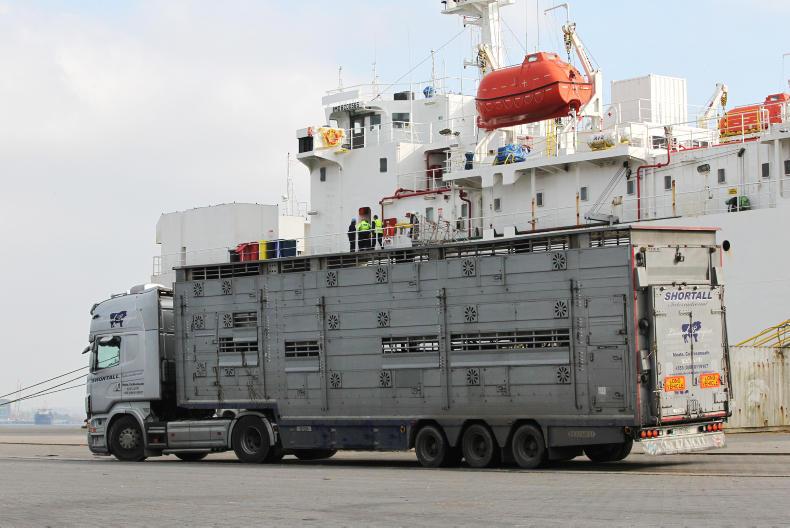If the factories don’t deliver a price that is attractive enough to farmers, then cattle are going to be exported in stronger numbers, according to Joe Burke, livestock sector manager of Bord Bia.
On live exports, Burke said that so far this year the major category of animals we have seen a big increase in have been the calves in springtime.
“There have been over 100,000 calves exported already at this stage up until the middle of July. Weanlings would have also seen a significant increase.
“So far this year, we’ve exported nearly 15,000 animals in total to Italy and almost 12,000 to Turkey.”
There are nearly twice as many weanlings exported this year as last year, so a very significant increase, similar to the calves.
Impact on beef price
Speaking to the Irish Farmers Journal, Burke said that the increase in live exports has in turn had a very positive impact on the beef price.
“The increase that we have seen has mainly been in animals that have been born either this spring or animals less than 12 months old, so they wouldn’t really be hitting the market this year anyway.
“[The live exports] are definitely a factor, whether it’s a psychological impact on the part of the farmers when they see the positivity in the animals going out or whether the factories know that there are these alternative outlets.
“If they don’t deliver a price that is attractive enough to farmers, then these animals are going to go in stronger numbers.
“Farmers feel that they are in a stronger selling position when they have a number of alternative customers, including domestic buyers, as well as export opportunities.”
Demand for Irish beef
On demand for Irish beef, the livestock sector manager said that last year the profile of Irish beef exports would have been that of the 535,000t that we exported.
Of this number, 50% went to the UK and 45% went to other EU markets and just 5% went outside of Europe, Burke said.
Read more
Cull cow trade continues to be strong and steady
Beef trends: struggle to secure upper hand
If the factories don’t deliver a price that is attractive enough to farmers, then cattle are going to be exported in stronger numbers, according to Joe Burke, livestock sector manager of Bord Bia.
On live exports, Burke said that so far this year the major category of animals we have seen a big increase in have been the calves in springtime.
“There have been over 100,000 calves exported already at this stage up until the middle of July. Weanlings would have also seen a significant increase.
“So far this year, we’ve exported nearly 15,000 animals in total to Italy and almost 12,000 to Turkey.”
There are nearly twice as many weanlings exported this year as last year, so a very significant increase, similar to the calves.
Impact on beef price
Speaking to the Irish Farmers Journal, Burke said that the increase in live exports has in turn had a very positive impact on the beef price.
“The increase that we have seen has mainly been in animals that have been born either this spring or animals less than 12 months old, so they wouldn’t really be hitting the market this year anyway.
“[The live exports] are definitely a factor, whether it’s a psychological impact on the part of the farmers when they see the positivity in the animals going out or whether the factories know that there are these alternative outlets.
“If they don’t deliver a price that is attractive enough to farmers, then these animals are going to go in stronger numbers.
“Farmers feel that they are in a stronger selling position when they have a number of alternative customers, including domestic buyers, as well as export opportunities.”
Demand for Irish beef
On demand for Irish beef, the livestock sector manager said that last year the profile of Irish beef exports would have been that of the 535,000t that we exported.
Of this number, 50% went to the UK and 45% went to other EU markets and just 5% went outside of Europe, Burke said.
Read more
Cull cow trade continues to be strong and steady
Beef trends: struggle to secure upper hand






 This is a subscriber-only article
This is a subscriber-only article










SHARING OPTIONS: